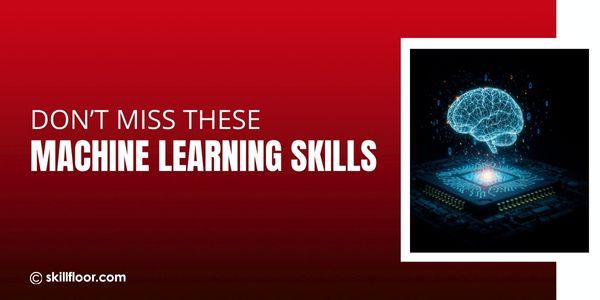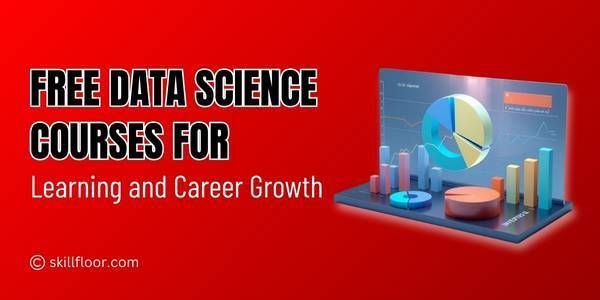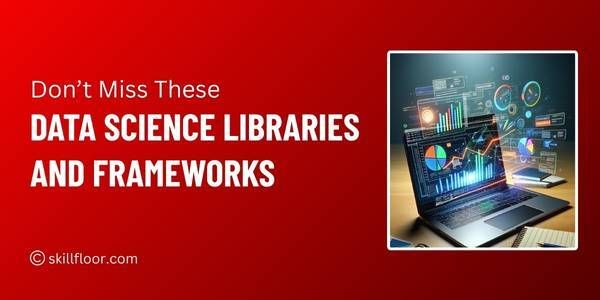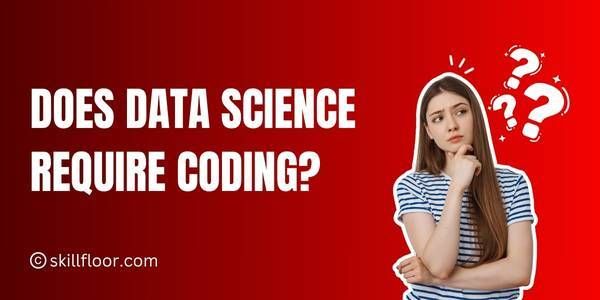Statistics Basics for Data Science
Learn essential statistics for data science, covering core concepts like probability, distributions, and hypothesis testing in simple terms.

Have you ever wondered how applications determine your preferences or why charts are essential in the workplace? Data in action, that's all. Statistics are necessary to comprehend it, though. You may use it to identify trends, formulate insightful inquiries, and transform data into meaningful insights. A sensible strategy to confidently make better selections is to learn the fundamentals of statistics.
For years, statistics have been depended upon in domains such as research, business, and health. It enables individuals to test concepts, identify solutions, and make informed decisions. Statistics form a solid foundation in data science. Understanding statistics helps you do work that is truthful, understandable, and significant, whether you're researching patterns or resolving issues.
When data is used without statistics, errors or erroneous trends may result. Making better judgments, identifying mistakes, and asking more intelligent questions are all aided by even a rudimentary statistical understanding. It demonstrates your diligence and knowledge to others and increases their faith in your job. To use data effectively and project an image of a trustworthy, considerate professional, it is essential to learn statistics.
What is Data in Statistics?
In statistics, data refers to information that has been gathered and expressed as words, numbers, or categories. Surveys, experiments, and everyday activities can all provide it. Data that aids in learning and understanding patterns includes things like the number of customers that visit a business or the types of ice cream that people prefer.
To uncover answers, identify trends, and make informed judgments, statisticians use data. It is comparable to solving a riddle by examining hints. Data provides us with the information we need to research and explain what is occurring, whether it be in the form of exam results or weather variations.
Types of Data
-
Qualitative Data: Words or labels are used in this kind of data. It explains things like names, colors, and classifications. For instance, preferred crops, pet breeds, or auto brands.
-
Quantitative Data: Numbers are a part of quantitative data. It can be measured or counted. For instance, how tall you are, how many books you own, or how many hours a week you spend studying.
-
Discrete Data: The numbers in this data are whole numbers. You can plainly count every piece. Example: how many emails you received today, how many siblings you have, or the number of chairs in the classroom.
-
Continuous Data: There are several possible values for this measured data. Decimals are frequently included. For instance, the time it takes to walk home, the temperature outdoors, or your weight.
Why Statistics Matters in Data Science
Data science uses statistics to identify practical solutions. By revealing the true meaning of the data, it helps make informed decisions, identifies trends, and transforms statistics into insights.
-
Makes Sense of Data: Instead, then only seeing the numbers, statistics helps you grasp what they say. It provides charts, rows, and columns with meaning.
-
Finds Useful Patterns: It makes patterns and trends in the data visible. This aids in identifying what is effective, what is evolving, and potential future developments.
-
Supports Smart Decisions: Facts are necessary for sound decision-making. Whether in daily life, business, or health, statistics aid in making informed decisions, comparing outcomes, and testing theories.
-
Reduces Risk of Mistakes: It's simple to make an incorrect assumption in the absence of statistics. By distinguishing between what is true and what is merely arbitrary or coincidental, it helps prevent mistakes.
-
Helps Explain Results Clearly: Sharing discoveries with others is made easy using statistics. It facilitates understanding and builds trust in your job.
-
Builds a Strong Foundation: Gaining knowledge of statistics provides you with a strong foundation for all of your data work. It relates to everything, including basic reports and research.
What Is Statistics?
The way we gather, arrange, and interpret data is called statistics. We can see what the stats are telling us because of it. Statistics assist in transforming data into something obvious and helpful for improved comprehension and decision-making, whether it be exam results, sales numbers, or survey responses.
We can test theories, compare groups, and identify patterns using statistics. It's often utilized in research, sports, corporations, and schools. With a few easy steps, statistics allows us to ask insightful questions and obtain meaningful answers from the data we observe daily.
-
Descriptive Statistics: Descriptive statistics illustrate the appearance of data to help with understanding. Tables, charts, percentages, and averages are among its instruments. With it, you can swiftly describe summaries, patterns, or trends without speculating about the broader picture.
-
Inferential Statistics: With inferential statistics, you may use a smaller sample to generate educated assumptions about a larger population. It employs concepts like testing and probability. When you want dependable findings but are unable to get data from everyone, this kind is helpful.
Measures of Central Tendency
-
Mean: The average of all values is called the mean. Divide the total number by the number of people.
-
Median: The middle number in an ordered list is called the median. Average the two middle integers if the number of values is even.
-
Mode: The most frequent number in a collection is called the mode. A set may have one mode, several modes, or none at all.
|
Measure |
Formula |
|
Mean (μ) |
μ = Sum of Values / Number of Values |
|
Median |
Odd: Middle ValueEven: (Middle1 + Middle2) / 2 |
|
Mode |
Mode = Most Frequent Value |
Measures of Dispersion
-
Range: Range displays the variation between the lowest and maximum numbers. The simplest method for determining the scope of the data is this. More variance in the data values is indicated by larger ranges.
-
Variance: A dataset's variance indicates how much its results deviate from the mean. The greater variation, the more dispersed the numbers are. It is useful for comparing the differences between data points.
-
Standard Deviation: How far the data values deviate from the mean is shown by the standard deviation. It resembles the mean separation from the center. Data that is close together is indicated by a tiny value.
-
Interquartile Range (IQR): IQR displays the data's middle 50%. Between the first and third quartiles, it calculates the range. It is quite effective at identifying consistent values while excluding outliers or extreme values.
|
Measure |
Formula |
|
Range |
Range = Highest Value – Lowest Value |
|
Variance (σ²) |
σ² = Σ(x - μ)² / N |
|
Standard Deviation (σ) |
σ = √Variance or √[Σ(x - μ)² / N] |
|
Interquartile Range (IQR) |
IQR = Q3 – Q1 |
Data Distribution Shape
Skewness: Skewness indicates if the data is more biased. It indicates if the values are dispersed irregularly from the average or median value.
Types of Skewness:
-
Positive Skew (Right-skewed): Tail on the right
-
Negative Skew (Left-skewed): Tail on the left
-
Zero Skew (Symmetrical): Evenly spread on both sides
Kurtosis: Kurtosis shows how sharp or flat a data peak is. It helps you understand how extreme values affect the shape of the distribution.
Types of Kurtosis:
-
Leptokurtic: Sharp peak, heavy tails
-
Platykurtic: Flat peak, light tails
-
Mesokurtic: Normal peak, like bell curve
Probability Fundamentals
Probability is the likelihood that an event will occur. It helps with result prediction, such as when we choose a card or flip a coin. It goes from 0 (the event won't occur) to 1 (the event will occur).
Bayes’ Theorem
The Bayes Theorem assists you in updating the likelihood of an event depending on fresh data. It helps make decisions, particularly when there is a lack of information. To enhance forecasts, it makes connections between existing evidence and prior knowledge.
Formula:
Where:
-
P(A∣B)P(A|B)P(A∣B) = Probability of A given B
-
P(B∣A)P(B|A)P(B∣A) = Probability of B given A
-
P(A)P(A)P(A) = Probability of A
-
P(B)P(B)P(B) = Probability of B
Probability Distributions
Probability distributions display a dataset's likelihood of specific numbers. Some people deal with continuous values, whereas others deal with discrete whole numbers. There are algorithms for each category that determine the likelihood of particular outcomes.
-
Bernoulli Distribution: Two possible outcomes for a single trial are success (1) and failure (0), as modeled by the Bernoulli distribution. When checking if something occurs or not, such as when flipping a coin once, it is employed.
-
Binomial Distribution: The probability that a certain number of yes/no trials would be successful is displayed by the binomial distribution. For repetitive actions, such as repeatedly flipping a coin, it is employed.
-
Poisson Distribution: To determine how frequently an event occurs during a given time or location, the Poisson distribution is utilized. For stuff like hourly phone calls or website visits, it's fantastic.
-
Normal Distribution: The normal distribution has a bell-shaped form. The majority of values are in the center. It is used for heights, test results, and any other data where values tend to cluster around an average.
-
Uniform Distribution: Each value in a range has an equal probability in a uniform distribution. No number within the predetermined range is more likely than any other; it's like rolling a fair die.
-
Exponential Distribution: Time between occurrences is measured using the exponential distribution. It is frequently employed in circumstances such as bank wait times or wait times for the next client to arrive.
Inferential Statistics
We may learn about our data's trends using descriptive statistics. However, what if you wish to make an educated prediction about a larger population using a tiny sample?
Inferential statistics can help with that.
Suppose you polled one hundred individuals on their favorite pizza. Using such data, you want to make educated guesses about the preferences of the whole nation. You would require inferential statistics.
Key Concepts:
-
Sampling: Since you can't normally question everyone, you choose a sample, which is a smaller group. A good sample is fair and random, allowing you to get a sense of the overall situation without having to question everyone.
-
Confidence Intervals: Confidence intervals indicate your level of confidence in your sample-based estimate. With a 95% confidence interval, you may be quite certain that your result is within a reasonable range of the real number.
-
Hypothesis Testing: It helps in determining if a change or outcome is genuine or the product of chance. For inquiries such as "Did a new feature increase click or was it random?" It might be helpful.
-
P-Values: A p-value indicates if your finding is likely to be accurate or the product of pure chance. It often indicates that something significant is occurring rather than merely a chance result if it is less than 0.05.
Correlation vs. Causation
-
Correlation: A correlation indicates a connection between two items. Frequently, when one changes, the other does too. However, this does not imply that one causes the other. For instance, sunburns and ice cream sales both increase during the summer; they are connected, but one does not cause the other.
-
Causation: Causation is the direct relationship between two things. It demonstrates a causal link. For instance, you get burned when you touch a hot stove. It takes more than merely identifying a pattern or trend between two items to establish causality; tests or in-depth research are required.
How Statistical Tests Help You Make Decisions
If anything worked, you don't have to speculate. You can give it a try.
Suppose you test two iterations of your website (A and B) to see which one generates more sales. You want to know if the adjustment actually had an impact. This is where statistical tests are useful.
Some Common Tests:
-
T-Test: To determine if two groups actually vary from one another, a t-test is used. This lets you determine if a change or outcome between two sets of statistics is significant or merely coincidental.
-
Chi-Square Test: The chi-square test is employed to determine whether two groups are related. Knowing if group variations in preferences or characteristics are genuine or merely coincidental is helpful.
-
ANOVA: If more than two groups need to be compared, an ANOVA is utilized. It lets you know if the variations in group findings are significant or if they may have just happened.
Regression
Understanding and predicting connections between variables is made easier by regression. It illustrates the relationship between two things. Regression uses historical data to forecast future events, such as predicting weather based on temperature changes or sales based on ad expenditure.
Two Simple Types:
-
Linear Regression: A number is predicted using linear regression if another number is known. The trend is displayed by drawing a straight line through the data. For instance, you may use a student's study hours to forecast how well they would do.
-
Logistic Regression: Using logistic regression, yes-or-no outcomes may be predicted. It indicates a likelihood of something happening rather than a number. Based on a customer's previous behavior, for instance, it can predict the possibility that they would make a purchase.
How to Use Statistics in Real Projects
-
Collect Data: Begin by gathering information from trustworthy sources. Make sure it is clear, comprehensive, and pertinent to your objective. Good data is the cornerstone of every reliable and practical analysis.
-
Explore the Data (EDA): To summarize and comprehend the data, apply fundamental statistics. Examine charts, averages, and ranges to identify any anomalies. EDA enables you to understand the true meaning of your data.
-
Find Patterns: Look for patterns, connections, and anomalies. Examine the collective changes in the variables. Patterns might help you validate your initial suspicions or inspire fresh thoughts.
-
Ask Questions: To determine if your findings are genuine or the result of pure chance, use statistical techniques such as hypothesis testing. P-values assist you in determining if a result is reliable enough to be taken seriously.
-
Predict or Classify: To create predictions, use methods like regression or basic probability. Based on what has previously occurred in your data, you may organize items, predict outcomes, or make educated guesses about future behavior.
-
Report and Share: Use summaries, graphs, and simple language to effectively communicate your findings. Make sure people can trust your method and comprehend your findings. Analysis is put into action through effective reporting.
Tips for Beginners Learning Statistics
-
Start with Basics: Pay attention to basic concepts like percentages, charts, and averages. It's easy to study more later without feeling overwhelmed or lost when you understand the fundamentals.
-
Use Real-Life Examples: Practice with topics that are important to you, like survey results, purchasing patterns, or sports scores. Real-world examples make learning statistics more enjoyable and easier.
-
Watch and Learn Visually: To better grasp subjects, use illustrations, movies, or basic charts. Learning is frequently accelerated and clarified when concepts are illustrated.
-
Ask “Why” Often: Don't only commit formulas to memory. Try to comprehend the purpose of your use of them. This enables you to apply what you've learned to actual issues or queries.
-
Practice a Little Daily: Ten to fifteen minutes a day might be beneficial. Over time, small, consistent practice improves your memory of what you've learnt and helps you develop strong abilities.
-
Don’t Fear Mistakes: Making mistakes or being confused during studying is common. You learn from your mistakes. You'll become better with time, so have patience with yourself and keep going.
Making sense of numbers, seeing practical trends, and making smarter decisions in life and at business are all made possible by statistics. A solid foundation for comprehending the world around you is built by mastering statistics, regardless of whether you're studying, working in business, or simply inquisitive. It assists in transforming raw data into narratives, solutions, and astute decisions. Anyone may get comfortable with it by practicing frequently, asking the proper questions, and learning by doing. You get confidence the more you experiment and use it. With statistics in your toolbox, you can tackle real-world issues with precision and consideration.




























































